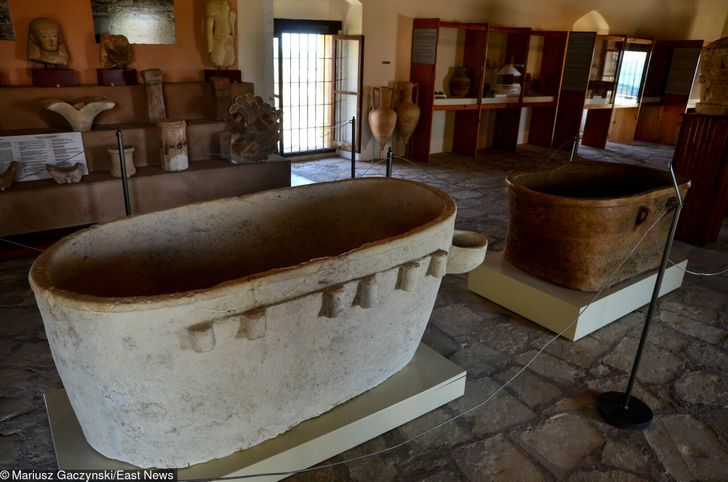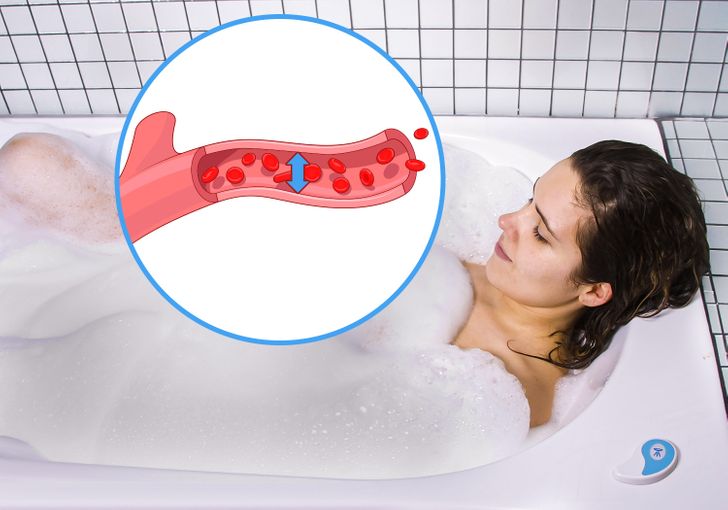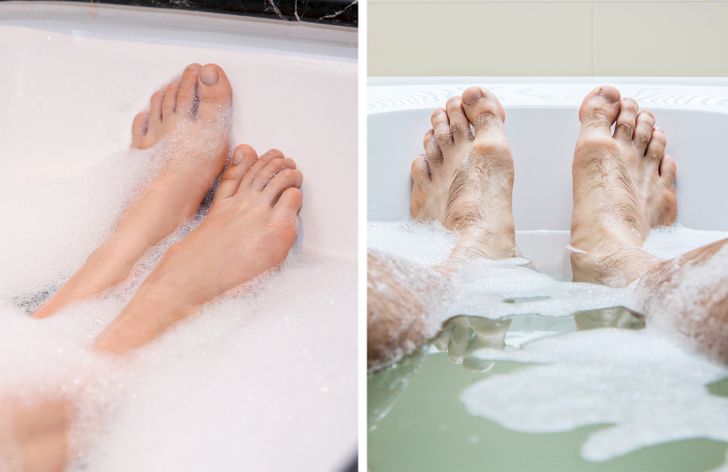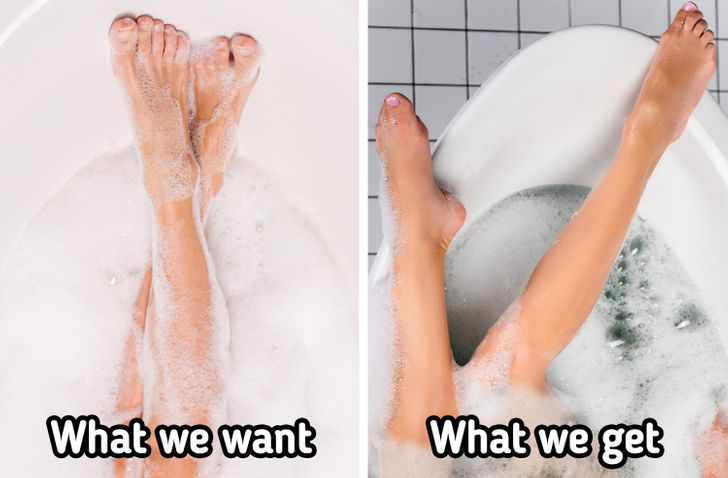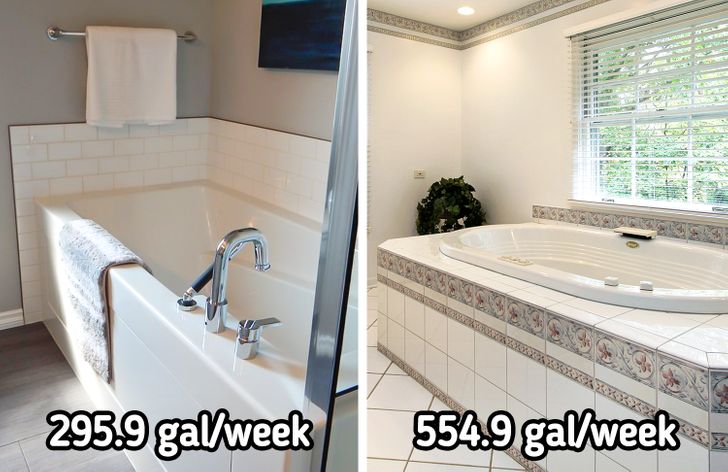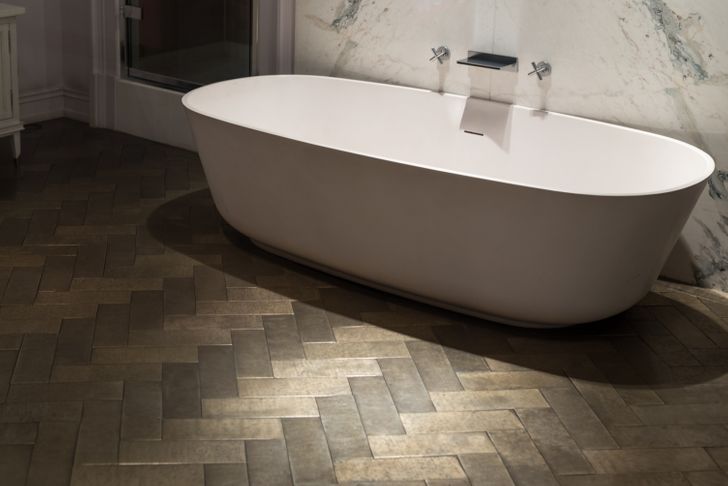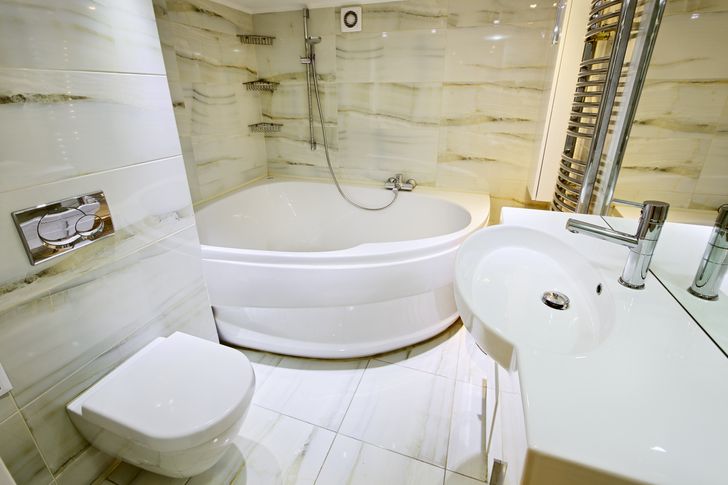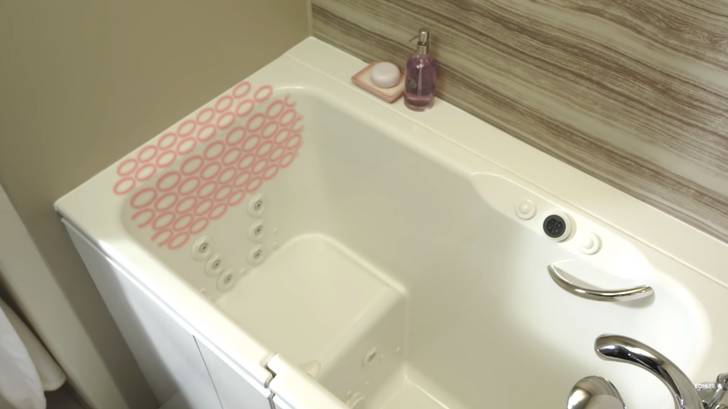I think it's way more comfortable to to dit in the bath, not to lie in there 😄
Why Bathtubs Are Too Small to Stretch Out Your Legs In
The thought of relaxing in a nice hot bath in the evening has gotten many people through the toughest of their days. In fact, the relaxing effect of taking a bath was proven by the participants of an experiment who reported a significant decrease in stress and fatigue. But could the effect be even more impressive if the bathtubs were large enough for us to be able to stretch out our legs?
We at Bright Side were curious as to why we are all deprived of the opportunity to relax completely in our bathtubs and we found 6 reasons for it.
1. Tracing the origins
The first bathtubs date back to ancient times: the citizens of Ancient Rome borrowed the bathing custom from Greece at the end of the 3rd century B.C. Tubs in a form that is more familiar to us were introduced in the mid-18th century in the Netherlands and actively spread after their appearance in England in 1828.
These bathtubs were mostly made of cast iron or porcelain enamel. Producing larger tubs would not only significantly increase the cost, but would also make it extremely difficult to install them anywhere higher than the first floor of buildings with the existing level of technological development.
2. Better safe than sorry
The bathroom is the most dangerous place in your home. While it’s quite unlikely that you’d fall asleep and slip underwater in a bathtub without noticing it, the danger of fainting and drowning is definitely there. When you’re bathing, hot water becomes a burden for your heart, which can lead to a so-called “hot tub” syncope. In this case, it’s better to not be able to submerge underwater.
3. Using bathroom space efficiently
Bathrooms tend to be rather small, which is why it’s important to use this space efficiently. Bathtub sizes vary across the world, but standard tubs especially in older buildings, are 60 inches long (152 cm), 32 inches wide (81 cm), and 18 inches (46 cm) deep. This is just enough for an average adult to sit up straight and submerge their legs into the water, which meets the minimum requirements.
4. Showers are a priority
There’s little use in investing in larger bathtubs when constructing a residential building because most people simply prefer taking showers. Showers are better for cleaning the body because when you take them, water gets evenly distributed all over your body.
5. Comfort comes at a cost
We should also consider the cost of extra water and electricity necessary for filling up a larger bathtub with hot water. The cost of those things varies a lot, but we can still look at the water consumption by itself. According to this calculator, daily bathing in a small tub (42 gallons or 160 liters) saves you about 259 gallons (980 liters) of water a week compared to a large bath (80 gallons or 300 liters).
6. There’s no need to make them large now
The fact that taking showers is better for the environment was figured out a long time ago, so making bathtubs bigger now doesn’t really make much sense. On top of that, a lot of people prefer taking showers because of their faster pace of life: it simply takes less time.
Bonus: unique bathtub options
-
Oval freestanding tub. These bathtubs have the same idea as the standard ones, but they look sleek and minimalistic. However, the fact that they are freestanding makes them less space-efficient.
-
Corner tubs. They provide a lot of space for bathing, and can even save some space if you have corner space in your bathroom you can use.
- Walk-in tub. This type of bathtub has a seat inside, so you are sitting inside the tub instead of lying down. Also, they take up very little space.
How often do you take a bath to relax?
Comments
or you can just visit the place where they have jacuzzi baths, those are nice!
pretty pricy though
I guess once in a while is just fine ;)
oh jacuzzi 😋
love those places, and with a warm sauna too
The walk-in tubs are a great IDEA, but impractical using. Think about it...
You have to walk-in the tub, shut the door, THEN start the water running. Waiting for it to fill up to a decent level and cover the jets can take up to 45-minutes. As the water fills, it cools, leaving you with a tepid water temperature. When you're done, you have to wait for it to drain, approximately 15- to 25-minutes, so that you can open the door and exit. As you're waiting for it to drain, the water is still getting colder. Both scenarios entail being naked and freezing or cover-up enough to keep you warm as the water level increases and decreases.
Related Reads
Keanu Reeves Finally Cuts His Long Hair, and His New Look Causes a Stir

16 Stereotypes That Modern Parents Should Leave in the Past

A Boy Who Was The World’s Heaviest Kid Shows How One Decision Can Change Your Whole Life

Miley Cyrus Raises Eyebrows as She Wears a Naked Dress Made Only of Safety Pins at the 2024 Grammys

17 People Who Beat the System With Their Humor

Meg Ryan, 62, Is Praised for Finally Looking Her Age As She Stuns in Her Latest Appearance

13 Photos That Will Move Even the Toughest People

“Look at That. No Nipples!” Angelina Jolie Stands Against Pressure Regarding Women’s Bodies

Helen Hunt, 60, Stuns During Her Latest Appearance, and Her Lips Become the Center of Attention

A Girl Born Without Nose, Who Was Called “Voldemort”, Proved Everyone Is Beautiful in Their Own Way

How These 12 Beauty Queens Who Made Charmed Millions Looked Then and Now

A Bride Refused to Change the Time of Her Wedding to Accommodate Her Sister and Thinks She’s Totally Right

